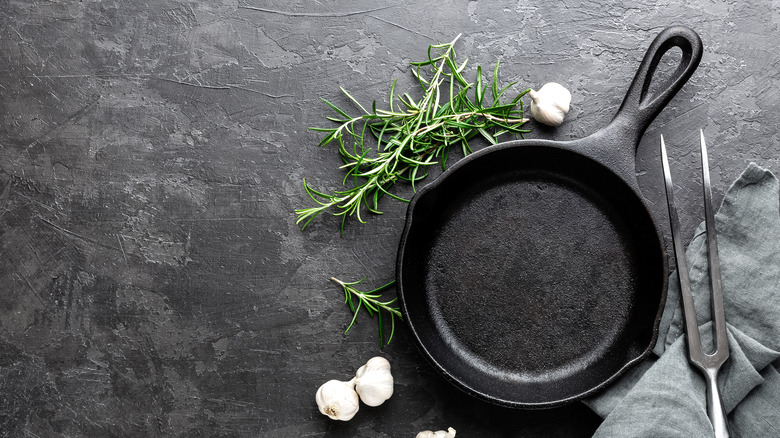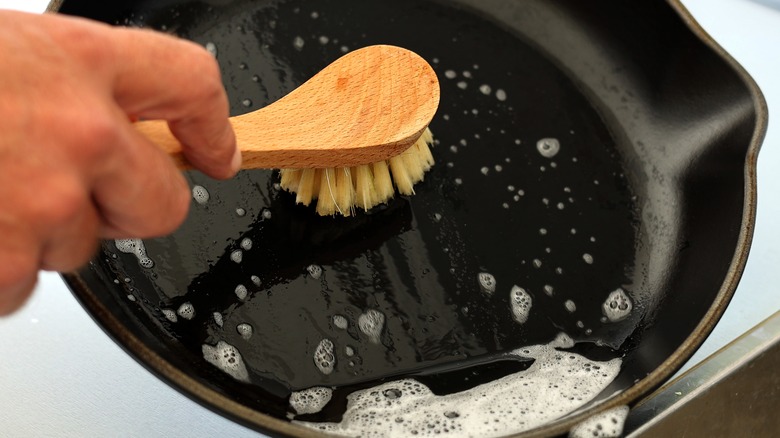Is It Possible To Overseason A Cast Iron Skillet?
If you know anything about cast iron skillets, you'll know that seasoning is one of the main reasons people love this particular cooking tool. As Lodge Cast Iron explains, taking a bit of extra time to properly season and maintain your cast iron skillet will keep any rust at bay. And, it makes cooking a lot easier by creating a naturally non-stick surface. There are many who absolutely swear by the results that cast iron cookware allows you to deliver (and there are many different ways to use a cast iron skillet as well, making it an even better investment).
However, seasoning isn't just a matter of using the skillet without ever washing it; it's a bit more complex than that. As per Taste of Home, you want to properly season a cast iron skillet by heating the pan with a thin coat of oil, and you need to clean it right after cooking with a bit of baking soda (never, ever any soap or harsh chemicals, which will destroy both the seasoning as well as potentially your pan, over time).
If you're a huge cast iron fan who uses your skillet almost every single day and has the seasoning and cleaning down to a science, though, you may have one additional question: In this context, can you get too much of a good thing and actually overseason your skillet? The answer might just surprise you.
Look for these two signs of overseasoning
Simply put, yes, it is absolutely possible to overseason a cast iron skillet, as Southern Living clarifies. However, don't worry, it's not the type of issue that results in you ruining your pan and needing to start from scratch with a new cast iron skillet. Some easy fixes do exist.
There are two primary ways to tell that you've accidentally overseasoned your cast iron skillet. The first is just by taking a look at the skillet's surface. In an overseasoned pan, you'll typically be able to spot pools of oil collecting around the perimeter of the skillet. The second is by touching the skillet's surface. As OvenSpot explains, when the skillet feels sticky to the touch, that's a telling sign that you've used too much oil. As per Kent Rollins, you only need about a quarter-sized amount of oil at the very most to season the entire skillet.
Luckily, it's not a tough error to reverse. For the simplest solution, you may want to consider simply baking your skillet again at 300 degrees Fahrenheit for about an hour without adding any additional oil in order to return it to the perfect level of seasoning. Alternatively, if you've really added a deluge of oil, you may want to do a deep clean and scrub it out with some hot water to get rid of all that excess oil before re-seasoning with the appropriate amount of oil and some time in the oven.

